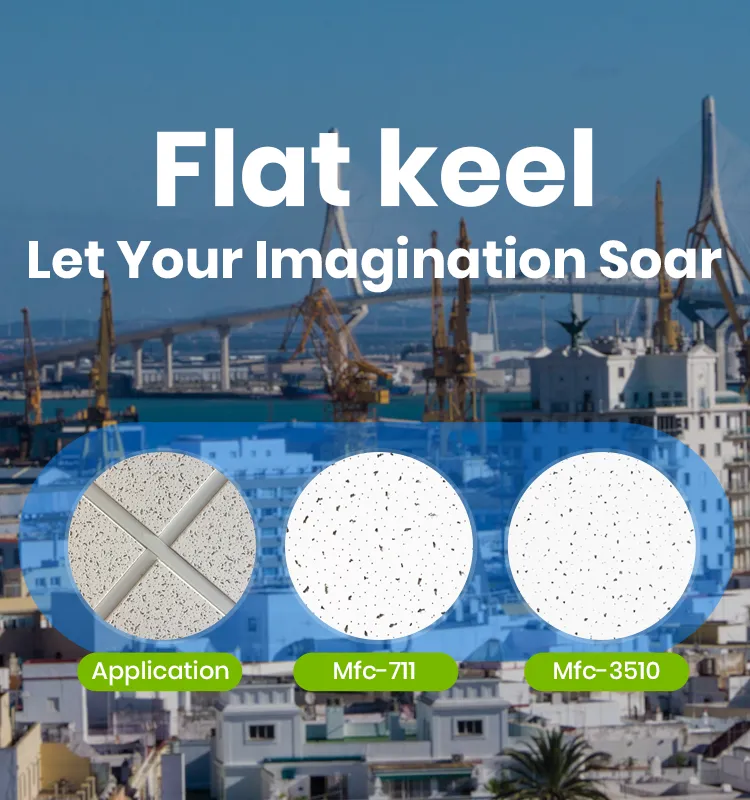- Afrikaans
- Albanian
- Amharic
- Arabic
- Armenian
- Azerbaijani
- Basque
- Belarusian
- Bengali
- Bosnian
- Bulgarian
- Catalan
- Cebuano
- Corsican
- Croatian
- Czech
- Danish
- Dutch
- English
- Esperanto
- Estonian
- French
- German
- Greek
- Hindi
- Indonesian
- irish
- Italian
- Japanese
- Korean
- Lao
- Malay
- Myanmar
- Norwegian
- Norwegian
- Polish
- Portuguese
- Romanian
- Russian
- Serbian
- Spanish
- Swedish
- Thai
- Turkish
- Ukrainian
- Uzbek
- Vietnamese
Dis . 05, 2024 04:01 Back to list
Comparing PVC and Gypsum False Ceilings for Modern Interior Design Options
PVC vs Gypsum False Ceiling A Comprehensive Comparison
When it comes to home interior design, the choice of ceiling material can significantly influence the overall aesthetics and functionality of a space. Among various options, PVC (Polyvinyl Chloride) and gypsum are two popular materials used for false ceilings. Each has its unique set of features, benefits, and drawbacks that cater to different needs and preferences. This article compares PVC and gypsum false ceilings to help you make an informed choice for your home or office.
1. Material Composition
PVC, or Polyvinyl Chloride, is a synthetic plastic polymer widely used in construction due to its versatility, durability, and waterproof properties. It is used to create panels or tiles that can be easily installed on ceilings.
Gypsum, on the other hand, is a natural mineral composed of calcium sulfate dihydrate. Gypsum boards, often known as drywall, are made from gypsum sandwiched between two layers of thick paper. This material is known for its fire resistance, sound insulation, and ability to create smooth surfaces.
In terms of aesthetics, PVC panels come in a wide variety of colors, patterns, and finishes, including glossy, matte, and textured options. This versatility allows homeowners to achieve a modern or traditional look based on their preferences.
Gypsum ceilings can also be aesthetically pleasing, particularly when they are plastered and painted. They provide a sleek and minimalist appearance, which appeals to those who prefer a clean, understated design. Moreover, gypsum can be easily shaped into intricate designs, allowing for unique architectural features.
3. Installation Process
When it comes to installation, PVC panels are comparatively easier and quicker to install. They typically come with a click-lock system or can be glued directly onto the ceiling, making them a favored choice for DIY enthusiasts. The lightweight nature of PVC also simplifies handling and reduces the time required for installation.
pvc vs gypsum false ceiling

Gypsum ceilings require a more complex installation process. They need a frame or support structure, and the boards must be cut to size, fastened, and finished with joint tape and compound. This process can take more time and may require professional assistance, especially for intricate designs and large spaces.
4. Durability and Maintenance
Both PVC and gypsum have strong durability, but they excel in different aspects. PVC is highly resistant to moisture, making it an excellent choice for areas prone to humidity, such as bathrooms and kitchens. Additionally, it is easy to clean with just a damp cloth, and it does not require painting or sealing.
Gypsum, conversely, is more susceptible to water damage. In humid environments, it can absorb moisture, leading to warping or mold development, which may necessitate replacement. However, gypsum ceilings are robust and can handle moderate impacts without denting. They also provide excellent sound insulation properties, making them suitable for residential and commercial spaces.
5. Cost Considerations
Cost is an essential factor when choosing between PVC and gypsum. PVC ceilings tend to be more budget-friendly in the long run, especially considering their easy maintenance and durability. They generally have a lower upfront cost and do not require frequent replacements.
Gypsum boards may have a higher initial cost due to the necessity of framing and finishing. However, if properly installed and maintained, they can last for years without significant issues. The choice ultimately depends on your budget, aesthetic preferences, and specific use case.
Conclusion
In conclusion, both PVC and gypsum false ceilings have their advantages and disadvantages. If you prioritize ease of installation, moisture resistance, and a wide range of design options, PVC may be the ideal choice for you. On the other hand, if you appreciate fire resistance, sound insulation, and are willing to invest in a more complex installation process, gypsum ceilings could be the better option. Ultimately, your final decision should be guided by factors like your budget, the intended use of the space, and your aesthetic preferences. Both materials can enhance your interior design, provided you choose the one that best fits your needs.
-
Transform Interiors with PVC Gypsum Ceiling: A Stylish, Durable, and Moisture-Resistant SolutionNewsMay.19,2025
-
The Smart Interior Upgrade: Discover the Durability and Versatility of Gypsum Ceiling Access Panel SolutionsNewsMay.19,2025
-
The Smart Choice for Interior Design: Discover the Value of PVC Gypsum Ceiling SolutionsNewsMay.19,2025
-
Mineral Fiber Ceiling Tiles: The Smart Blend of Performance and AestheticsNewsMay.19,2025
-
Mineral Fiber Ceiling Tiles: The Superior Choice Over Gypsum for Sound and Fire SafetyNewsMay.19,2025
-
Mineral Fiber Ceiling Tiles: Eco-Friendly Strength and Style for Every CeilingNewsMay.19,2025







